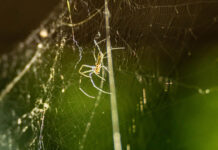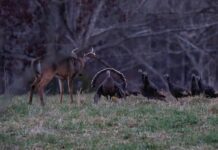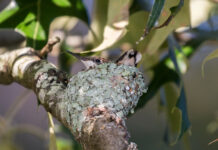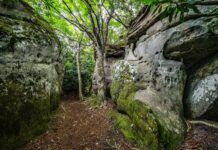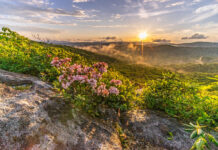
Most of my good locations for photography are privately owned land that is hunted by others. While hunting season was open, I agreed to stay away so as not to interfere with the hunting. Now that the seasons are over and the rain has taken a break, I have had a chance to get back into the woods near the flood control lake and beaver ponds that I visit with my camera.
Golden hour
This past chilly full moon February morning, I left the house on my camoed mountain bike at first light and headed to the flood control lake. The cool ride was a short one, getting through the locked gate and down the dirt road as quietly as I could. I arrived at the tall stand of trees at the lake’s edge and parked the bike silently.
I could hear the Canada Goose honking slightly at the other end of the lake and the raspy yelps of a turkey nearby in the treetops overhead. I didn’t try to find it as the light was still too low.
I saw the full moon starting to set beyond the horizon, so I walked quietly onto the dam to see if the image was good. Distant clouds were obscuring the view of the moon, and with the sun beginning to rise at my back behind the trees, the sunrise wasn’t eventful. So I just watched and listened for the “golden hour” to arrive in hopes that something would present itself to be photographed.
Suddenly, I heard wings flapping, and the gobbler that was still roosted when I arrived was flying across the lake to the other side. The lighting was too low still to bother trying to get an image. I slipped back into the trees beside the lake to provide some cover while I watched for activity. I slipped up to the old house, where I heard the drumming of a woodpecker on the walnut trees in the backyard and saw it fly away from a distance. It flew across the clear-cut to a stand of mature pines that its mate was entering.
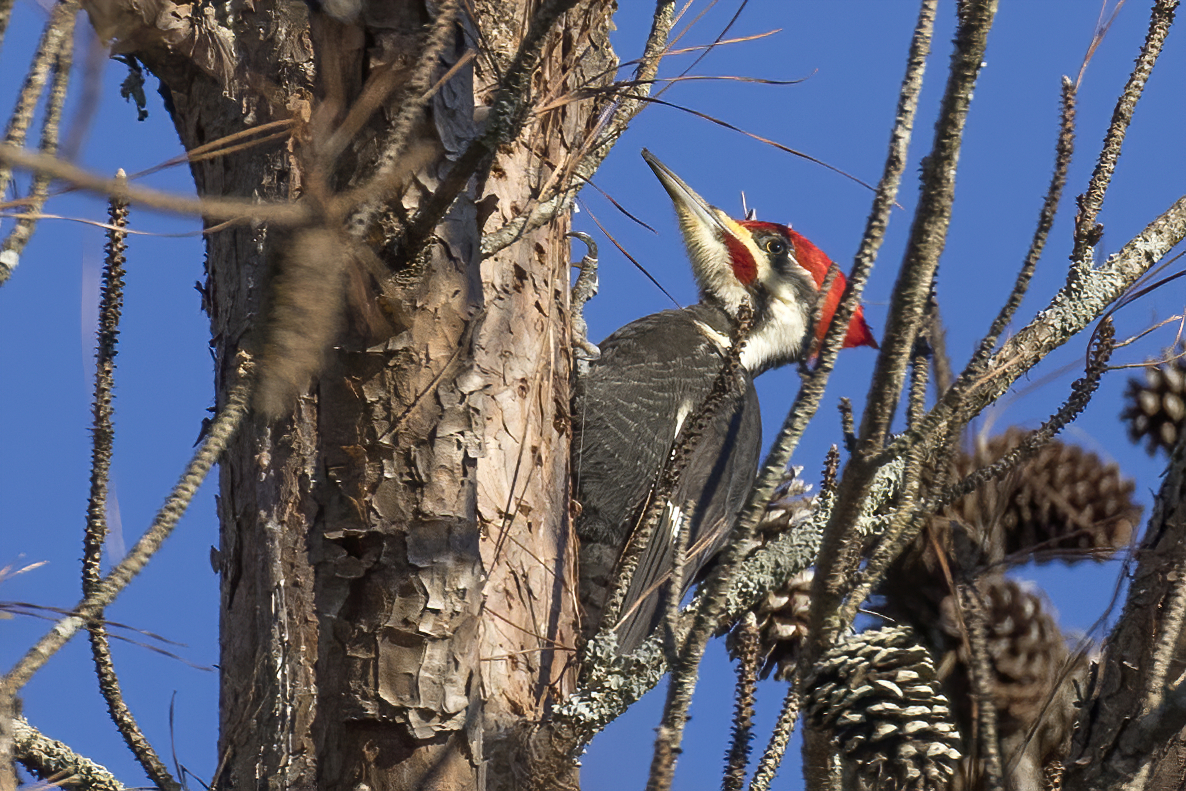
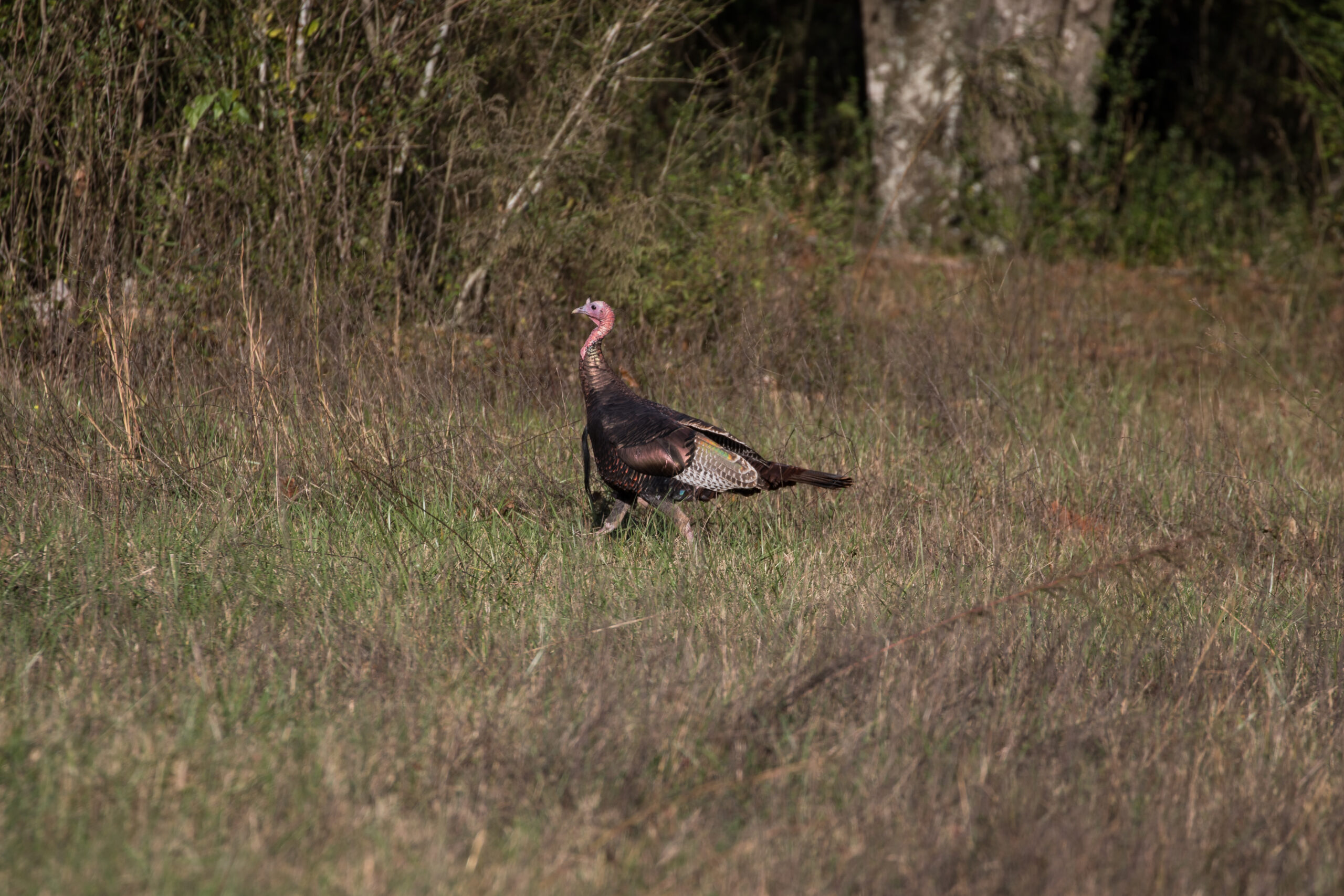
At lake’s edge
I went back down to the trees at the lake’s edge to see if there was any new activity. I spotted a pair of Wood Ducks swimming from the middle to the other side of the lake. As they got to the other side, I saw them dunking and bathing, as I have seen many times, and then they flew up onto a tree branch to dry out in the morning sun.
I heard a Kingfisher’s rattling call as it flew from perch to perch, making its way around the lake in search of an unwary fish.
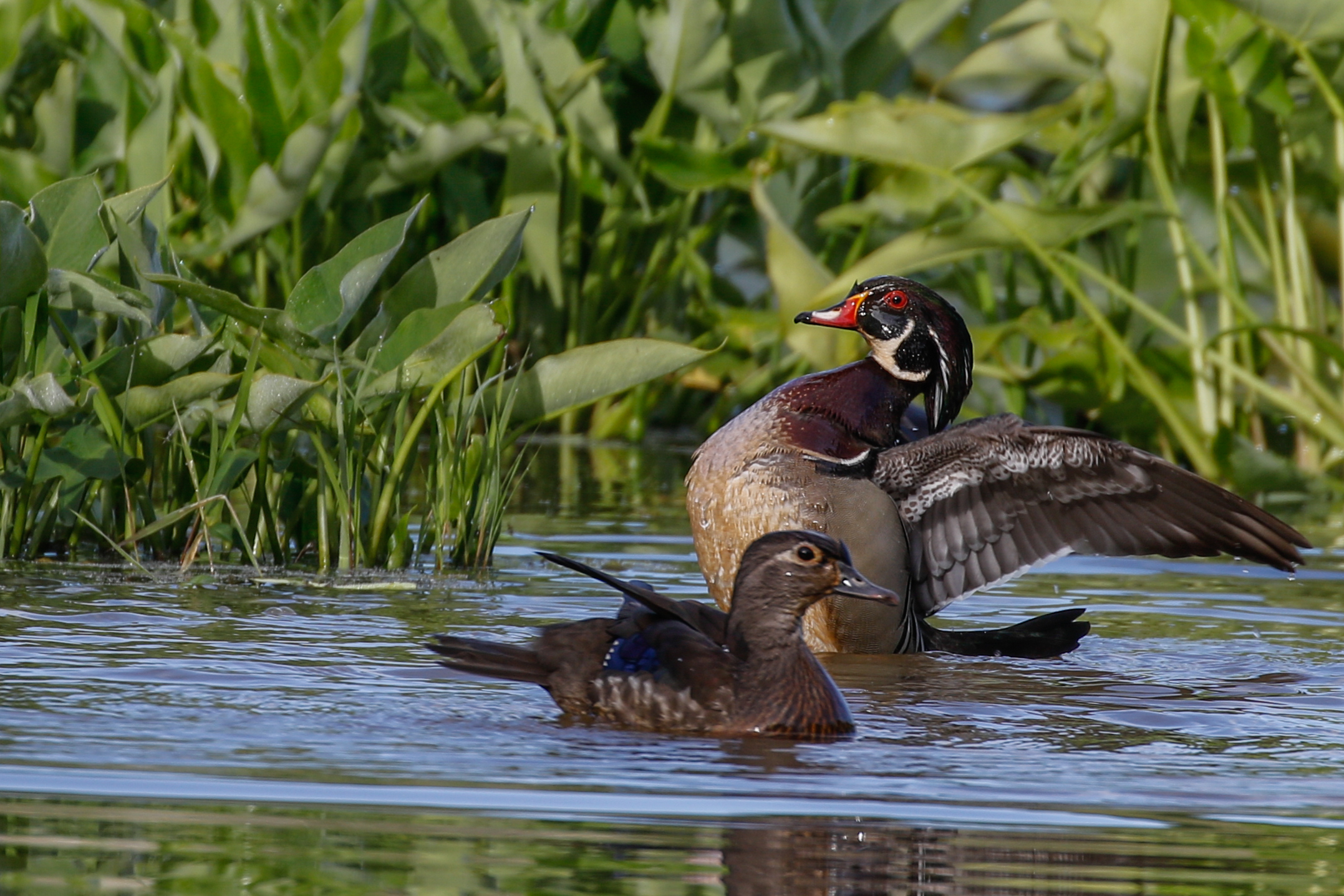

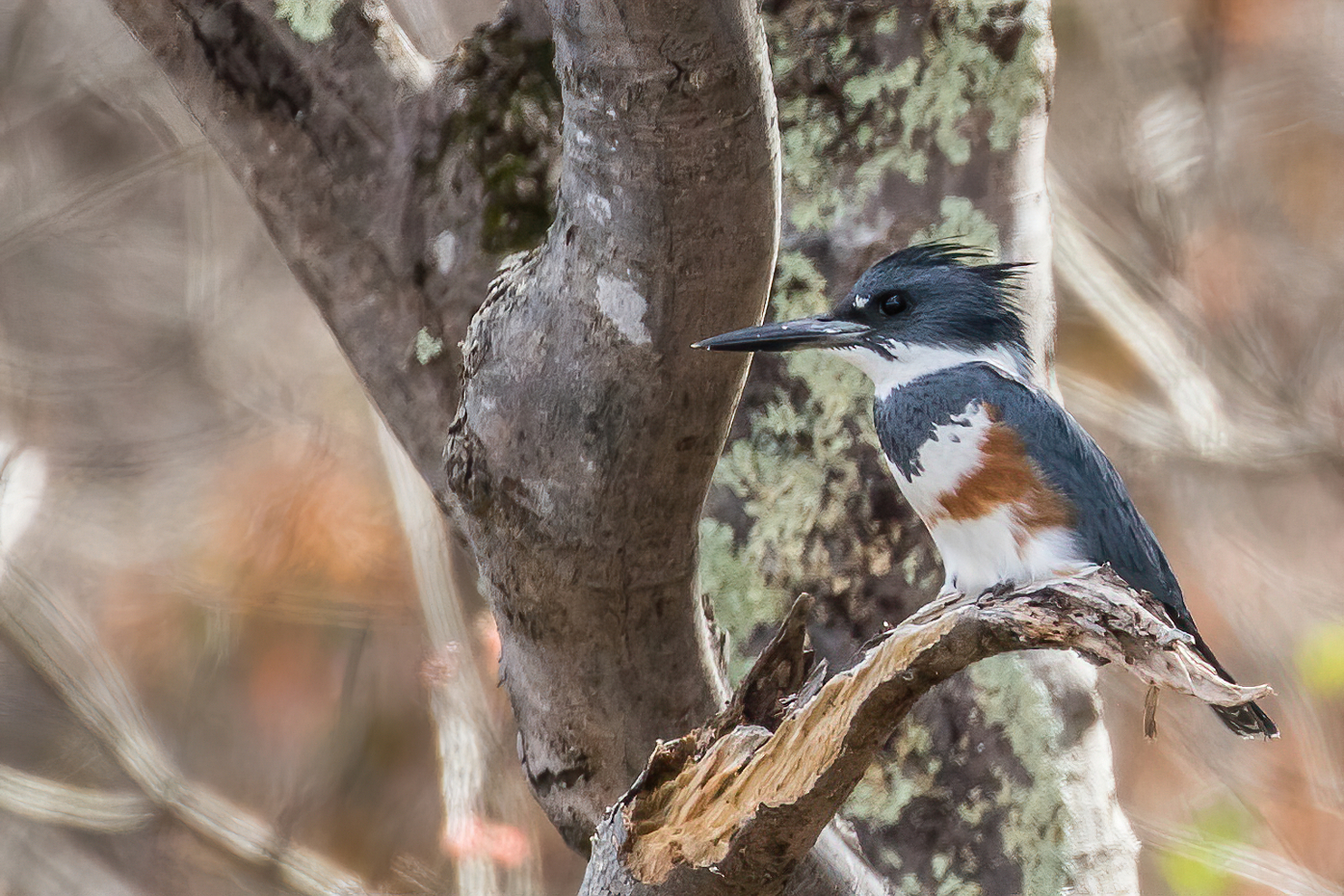
It had been a beautiful and peaceful morning, but I was having no luck at being close enough to the wildlife that I was seeing to get pictures. I could see in my mind’s eye the images that I had captured in the past of what I had been seeing from a distance this morning.
I finally decided to call it a morning and packed my gear on my bicycle.
Just as I was about to mount my bike, I heard the whining call of Wood Ducks at the lake’s edge nearby. I searched through the trees that were blocking the clear view of the lake to catch glimpses of the ducks in the cove below me. The good thing about my view being blocked was that it meant that their view of me was also blocked. I quickly unpacked my gear as I planned a route to get the sun at my back and hopefully reach a spot that the ducks would eventually swim to within my camera range.
First Wood Duck in flight
It’s just about impossible to slip up on these “wild Wood Ducks” with their keen eyesight. If they spot any suspicious movement, they don’t think twice about flying away; they’re airborne in an instant.
I reached my spot and settled in for the wait and hoped that they would swim my way. I waited a few minutes, but instead of the water ripples within my sight increasing, they decreased and then stopped. This meant that they were going up the creek that fed into the cove or were roosting, probably for a nap. I began to wonder what I should do next when I saw a hen fly out of the cove heading across the lake. Then I saw several more begin to fly out, so I stood to get some shots as they went by.
The few tree limbs in the foreground and the busy background prevented my camera auto-focus from getting a lock on them, and I could tell the images were very blurry and out of focus.
As I saw the dozen or so woodies’ backsides crossing the lake, I was disappointed. But then I heard some more getting airborne from the cove and pivoted back around. I aimed clear of the foreground clutter, and as they went by, I pressed the “back button focus” a couple of times until I saw focus. I pressed the shutter button for the 14 frames a second for about half a second. I scrolled through a few images and saw that a couple were looking good. I had gotten my first Wood Duck in flight images with a busy background.


It was a quick pedal home as I was anxiously awaiting to see the images on the PC display.
I got home and processed the files to get images of a mated pair and a single rooster in good focus. I hope that you enjoy the images. I am also showing some of my previous images that I remembered as the morning progressed.
_____
Joe Berry is a Certified Georgia Master Naturalist and nature photographer. His work has been featured by the Georgia Department of Natural Resources, Elachee Nature Science Center in Oakwood, and the Leon & Rachel Gathany Museum of Natural History at Toccoa Falls College. To enjoy more of Joe’s spellbinding photography and storytelling, visit Outdoor Living in the Features section of NowHabersham.com.

